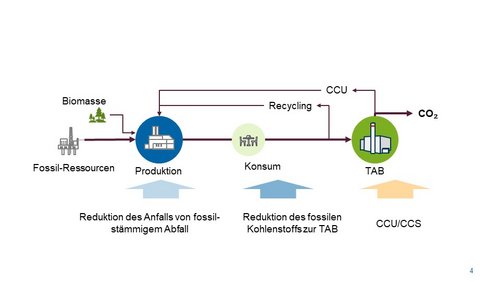New publication: bifa text no. 75 - pathways to reduce CO₂ emissions in thermal waste treatment in Bavaria
With the Bavarian climate strategy, thermal waste treatment is also moving into focus when it comes to reducing CO₂ emissions. In Bavaria around 3.2 million tonnes of waste are generated each year, which is treated in 14 incineration plants. This results in about 3.3 million tonnes of CO₂ being released – emissions for which innovative solutions are needed.
Carbon capture plays a central role in this. The most advanced technology currently available is amine scrubbing, which can be used to remove CO₂ from exhaust gases. The aim is to either store the captured CO₂ permanently underground (carbon capture and storage – CCS) or to reuse it as a raw material (carbon capture and utilisation – CCU). In addition to amine scrubbing, the study also highlights alternative processes that could reach market maturity in the future.
The distinction between fossil and biogenic CO₂ is particularly relevant. While originally CCS and CCU target fossil emissions, the capture of biogenic CO₂ offers the potential for so-called negative emissions – an increasingly important factor in offsetting unavoidable emissions in other fields.
Besides CO₂ capture, further greenhouse gas reductions can be achieved through technical optimisations of existing plants. These include, for example, the use of residual heat from flue gases and turbine exhaust steam.
At the same time, the study points out that CCS is not a panacea. Technical, legal and social challenges must be taken into account and carefully weighed against the expected benefits. CCS should therefore be embedded in a comprehensive climate strategy. The potential for avoiding fossil fuel emissions should be exploited as a matter of priority.
To wrap things up, the study points out specific measures to enable implementation of CCS and CCU, including legal adjustments, the development of a CO₂ infrastructure and targeted research and development funding.
